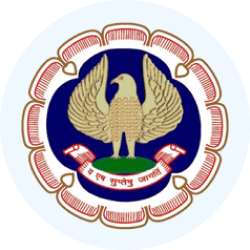CA Intermediate Exam > CA Intermediate Videos > Crash Course for CA Intermediate > Risk Assessment and Internal Control - 2
Risk Assessment and Internal Control - 2 Video Lecture | Crash Course for CA Intermediate
FAQs on Risk Assessment and Internal Control - 2 Video Lecture - Crash Course for CA Intermediate
| 1. What is the importance of risk assessment in internal control systems? |  |
Ans. Risk assessment is crucial in internal control systems as it helps organizations identify, analyze, and prioritize risks that could potentially affect their operations and objectives. By evaluating these risks, entities can implement appropriate controls to mitigate them, ensuring the integrity of financial reporting, compliance with laws, and operational efficiency.
| 2. What are the key components of an effective internal control system? |  |
Ans. An effective internal control system typically comprises five key components:
1. Control Environment - the foundation that sets the tone of an organization.
2. Risk Assessment - identifying and analyzing risks.
3. Control Activities - the policies and procedures to mitigate risks.
4. Information and Communication - ensuring relevant information flows within the organization.
5. Monitoring Activities - ongoing evaluations of the control system to ensure its effectiveness.
| 3. How can organizations ensure compliance with regulations through internal controls? |  |
Ans. Organizations can ensure compliance with regulations by establishing robust internal controls that align with legal requirements. This involves regularly reviewing and updating policies, conducting training for employees, implementing monitoring mechanisms, and performing regular audits to identify and rectify any compliance gaps.
| 4. What role does internal audit play in enhancing internal controls? |  |
Ans. Internal audit plays a vital role in enhancing internal controls by providing independent evaluations of the effectiveness of these controls. They assess risk management processes, ensure compliance with policies, and recommend improvements. This function helps organizations identify weaknesses in their internal control systems and promotes accountability.
| 5. What are some common challenges faced in implementing internal controls? |  |
Ans. Common challenges in implementing internal controls include resistance to change from employees, lack of resources or expertise, inadequate communication of policies, and difficulty in integrating controls into existing processes. Additionally, maintaining the balance between control effectiveness and operational efficiency can be challenging for organizations.
Related Searches














